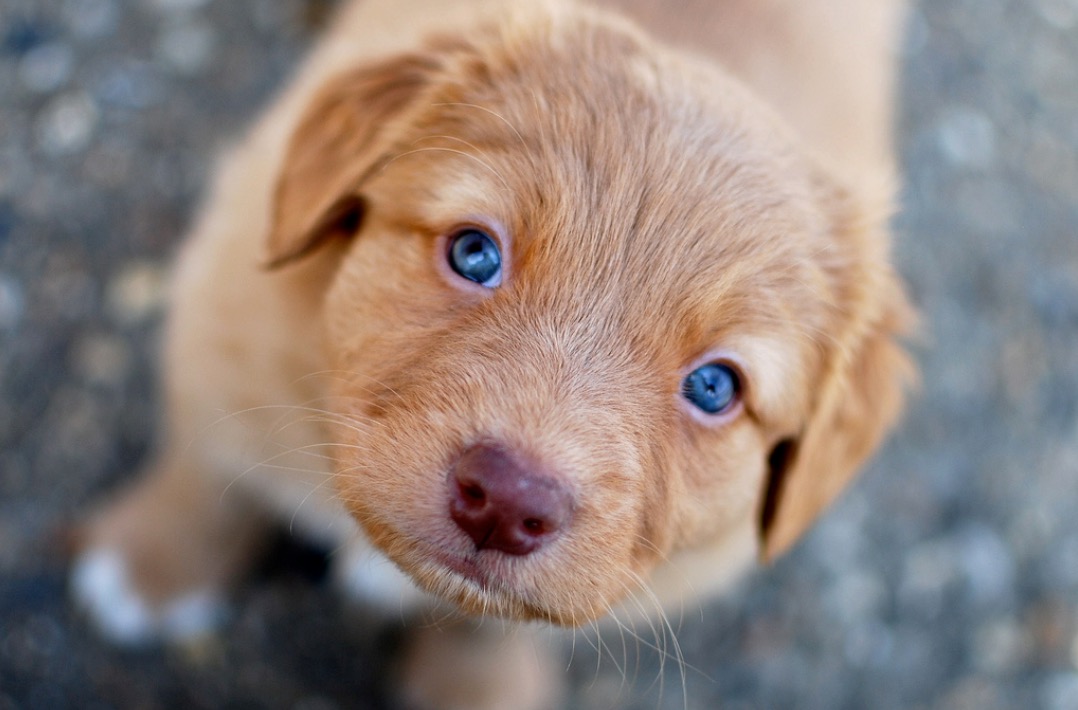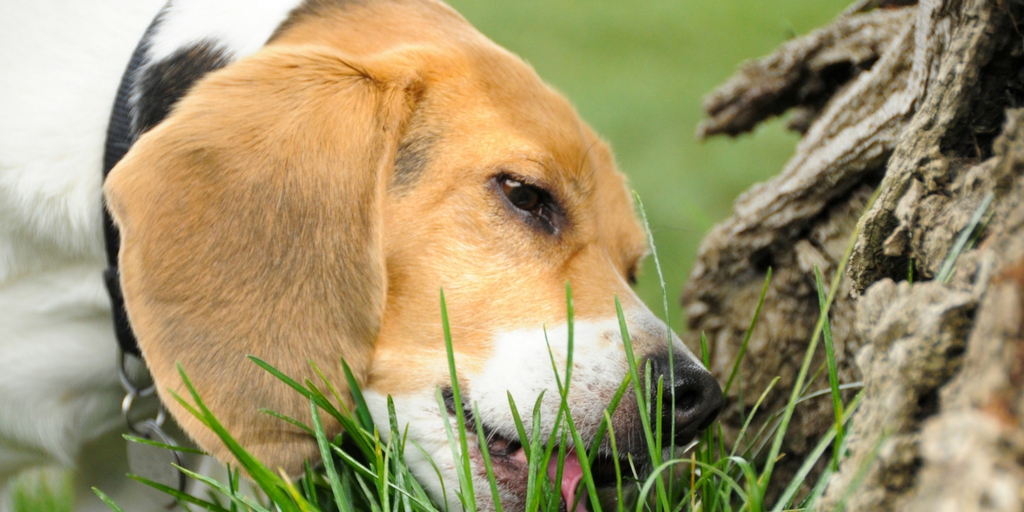Which dog breeds live the longest? That’s an excellent question! We’ve done some research to help you find the 10 long living dog breeds, and we’ll provide information on how to help your canine fur baby have a long, healthy lifespan.
Connect with a verified veterinarian in minutes. Licensed vets are available 24/7 to answer your questions. No need to worry about your furry family member.
Long Life Dog Breeds
Small dog breeds generally have longer lifespans that bigger breeds. Is there any science behind this generality? Actually, scientists do know that smaller breeds tend to live longer than larger dog breeds, but the consensus is still out as to why.
When we look at all types of mammals, we see that large animal species tend to live longer than smaller species. Think of elephants compared to mice—elephants live decades, while wild mice may live from 12 months to 5 years. There’s a huge difference between living for several decades compared to living only a few years. When it comes to dogs, science doesn’t have much to offer on why larger dogs have a shorter lifespan.
Dog Life Expectancy Chart
We’ve put together a life expectancy chart, showing the average lifespan of the dogs we cover in this article. Be sure to note that this chart only reflects average lifespan. Depending on a dog’s parents, overall health, etc., it’s possible one of these dogs breeds could live longer than the average. On the other hand, a dog with poor genetics and poor care may not live as long as the average lifespan.
| Dog Breed | Average Weight (in lbs) | Average Lifespan |
| Pomeranian | 3-7 | 12-16 |
| Maltese | 7 | 12-15 |
| Toy Poodle | 15-17 | 12-15 |
| Lhasa Apso | 12-15 | 12-15 |
| Dachshund | 16-32 | 12-15 |
| Curly Coated Retriever | 100 | 10-12 |
| Giant Schnauzer | 50-90 | 10-12 |
| Standard Poodle | 75 | 15-17 |
| Belgian Malinois | 80 | 10-12 |
| Alaskan Malamute | 100 | 12-15 |

Review symptoms, medications & behavior to keep your pets healthy with a Vet Online in just minutes.
Ask a Vet Live NowDog’s Genes and their Life Expectancy
Research has pointed toward breeding as the main culprit in shortening some dog breeds’ lifespans. We humans have bred dogs for work, show, and just because. Certain traits are desirable, while other traits are bred out. Genetics may be part of the problem. Genes determine how big a dog will be as an adult, they determine his coat color and pattern and much more. Scientists have found that larger dogs grow faster than their smaller counterparts, which can lead not only to bone and joint issues, but also seems to cause larger dogs to age faster than smaller dogs.
Research continues in this area, but for now, scientists just don’t understand why larger dog breeds have shorter lives than smaller breeds. More research is needed to understand this phenomenon in dogs.
Longest Living Large Dog Breeds
While the tendency is for larger dog breeds to have a shorter lifespan, there are some large breeds who do live a long time! Let’s take a look.
1. Alaskan Malamute: these dogs are large—they can weigh up to 100 lbs, with a lifespan of 12-15 years. These strong, sturdy dogs were bred to drag sleds and hunt. You’ll find these dogs are powerful and have almost unlimited strength and stamina. Not only that, Alaskan Malamutes are intelligent and need to strong human parent to keep them occupied. If these dogs become bored, they can be destructive. These intelligent fur babies are trainable and make loving companions for pet parents who are more experienced with dogs.
2. Giant Schnauzers: these dogs can be anywhere from 50-90 lbs and have a typical lifespan of 10-12 years. Gian Schnauzers are known for their intelligence and independence. It takes a strong, experienced pet parent to help these dogs guide their energy and intelligence in the right direction. These intense, energetic fur babies require a lot of exercise and intellectual challenges. They’re generally very affectionate with their humans, but can be wary of strangers, making them excellent guard dogs.
3. Standard Poodles: when you think of a poodle, you may picture a diminutive dog with a fancy haircut. Did you know these lovely dogs also come in a large size? Standard poodles can weigh up to 75 lbs, standing as high as 24 inches (at the shoulder), live an average of 12-15 years, though some have lived to almost 20 years. These smart dogs are known for their intelligence and their large personalities. Poodles come in a wide range of colors—from black and apricot, to white and silver and more. They’re usually reserved and calm but can also be energetic and playful.
4. Curly Coated Retriever: weighing in around 100 lbs, these lovely, energetic dogs often live between 10 to 12 years. If you’re looking for a dog that loves water, you’ve found your fur baby! The Curly Coated Retriever was bred as a hunting dog, but they’re also popular in dog sports. Known for their agility and obedience, these pups not only make great family companions—they’re also used as working dogs. You may see them put to work as drug detection dogs, search and rescue dogs and even therapy dogs.
5. Belgian Malinois: are a bit smaller than the others listed here, but are still classified as large dogs. They generally weigh up to 80 lbs and have a lifespan of about 12-14 years. Belgian Malinois are known for their love of family, sensitivity and intelligence. These working dogs need plenty of exercise and attention from the pet parents. They make excellent watchdogs.
You’ll want to make sure your Malinois is properly socialized with other humans and animals; these dogs can be aggressive with dogs, people and animals they don’t know.
Longest Living Small Dog Breeds
If a large dog isn’t right for you, then check out these small dog breeds that have long lifespans!
1. Lhasa Apso: this breed originated in Tibet, where they were used as guard dogs in palaces and even in monasteries. These lovely, loyal dogs now make wonderful family companions. Lhasa Apsos weigh between 12-15 lbs and live about 12-15 years. They’re recognized by their long, silky hair. Their protective nature does come out—don’t be surprised if your pup becomes fierce when guarding his home turf. These dogs must be properly socialized, but does make a wonderful, loving and protective companion for many years.
2. Pomeranian: they may be small (weighing between 3-7 lbs), but they live between 12-16 years! These diminutive dogs are known for their independence, intelligence and their high energy levels! These small dogs were originally bred from larger sled dogs—can you believe it? Pomeranians are loyal and make wonderful companions but must be socialized from a young age. These tiny pups think they’re actually large dogs and have a tendency to attack larger dogs.
3. Dachshund: weighing between 16-32 lbs, these small dogs can live up to 12-15 years. Known for their short legs and long body, Dachshunds are built for sports, such as running and swimming. These smart dogs have a big-dog bark, which makes them wonderful watchdogs. They were originally bred for hunting; they’re known for being brave and stubborn. However, these little dogs are also known for their loving nature.
4. Toy Poodle: must like their standard-sized cousins, Toy Poodles also enjoy a long life, with some living up to 20 years of age. The average life span is between 12-15 years. These smart little dogs need regular exercise and challenges for mental stimulation in order to avoid becoming bored. While they take a lot of grooming (clipping) on a regular basis, poodles don’t shed and can be a wonderful companion for those allergic to other dog breeds. They’re easy to train and make wonderful family pets but expect them to be a little yappy.
5. Maltese: these small dogs weigh in about 7 lbs on average and have a lifespan of 12-15 years. This breed is often recognized for being small, and having long, silky white hair. If you see a Maltese, you may think he’s walking on air—but it’s an illusion, due to his long, flowing hair. Maltese are known for their sweet natures and intelligence; they’re very popular dogs for apartment dwellers. These little dogs make great watchdogs and companions. With all the energy stored in their little bodies, Maltese will need a lot of exercise.
They crave their human’s attention and will pine when separated for long periods. While sweet, these little fur babies do need proper socialization and obedience training.
What Dog Has a Longest Lifespan?
We’ve looked at some long-lived dog breeds—but which is the oldest? That’s difficult to determine; however, we can tell you a bit about the oldest dog on record. His name was Bluey, and he was an Australian Cattle Dog.
Bluey lived for 29 years, 5 months and 7 days. He was born on June 7, 1910 and died on November 14, 1939. Bluey worked on a farm in Victoria, Australia, where he herded cattle and sheep for 20 years. His diet included kangaroo and emus.
- Common Signs of Aging in Dogs
- When it comes to aging in dogs, years are not a good measure of whether or not a dog is elderly or not. Here are some common signs a dog has entered their elder years:
- Cloudy eyes (film develops over dog’s eyes)
- Vision issues (a dog may not see as well as they used to)
- Need to frequently urinate
- Dementia/confusion
- Difficulty hearing
- Mobility issues (may have trouble getting up from a lying position, jumping on the couch, etc.)
- Weight changes (gain or loss)
- Lethargy
- Deeper sleep/sleeps more often
If your dog has begun to show any of these signs or symptoms of aging, it’s a good idea to take him to the vet as soon possible. The vet will do a complete physical checkup and may order a few blood tests to make sure these are not symptoms of underlying health issues. These symptoms may only be a sign of aging, but your put should be checked to make sure he stays healthy in his elder years.
Tips to Keep Your Dog Healthy at Any Age
Here are tips that keep your dog fit and younger longer. Even if your dog is older or a senior, there are things you can do to help him live a healthy, long life.
1. Avoid overfeeding: being overweight or obese isn’t good for a dog at any age, but especially when they become older. Older dogs may develop joint and spine problems, along with painful arthritis. These conditions are made much worse when a dog weighs too much. Carrying too much weight also makes it harder to get around.
2. Regular exercise: helps manage weight, keeps muscles fit and toned. Exercise is great for dogs of all ages. If your fur baby is older and hasn’t exercised regularly, be sure to have him checked by the vet before starting any exercise program. Your vet will help you determine the type and amount of exercise that’s best for your dog.
3. Regular checkups: are important for dogs of all ages. Not only that, but health issues are also easier to treat when found early. Be sure your dog has all his vaccinations at the proper time, too.
4. Quality dog food: be sure to choose food for your fur baby that’s high quality and provides the right amount of all nutrients your dog needs. If you’re not sure, then check with your vet for their recommendations on the best food for your pup.
5. Spay/neuter: help your dog avoid the health issues associated with mating. Not only will your dog be more comfortable, but they’ll also avoid disease such as uterine cancer, testicular cancer, breast cancer, etc.
We hope this article has helped you to find the fur baby of your dreams. We wish you both a long, happy, healthy life together!
Connect with a verified veterinarian in minutes. Licensed vets are available 24/7 to answer your questions. No need to worry about your furry family member.

Julie
Julie is a graduate of the University of North Carolina, Wilmington, where she studied Animal science. Though contrary to the opinion of her parents she was meant to study pharmacy, but she was in love with animals especially cats. Julie currently works in an animal research institute (NGO) in California and loves spending quality time with her little cat. She has the passion for making research about animals, how they survive, their way of life among others and publishes it. Julie is also happily married with two kids.
Review symptoms, medications & behavior to keep your pets healthy with a Vet Online in just minutes.
Ask a Vet Live Now



